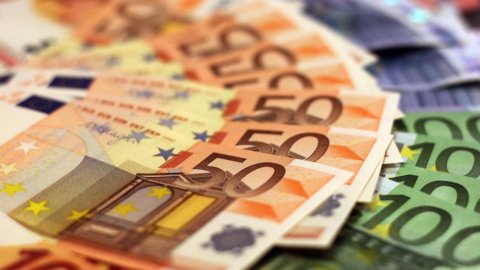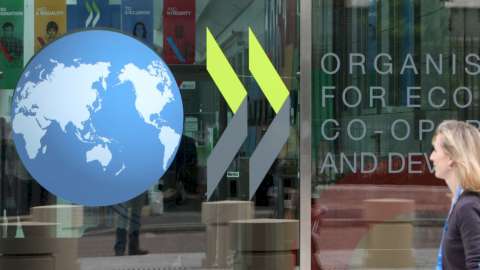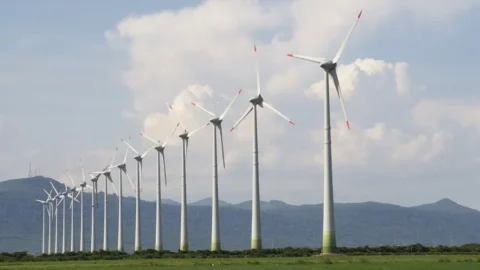The shocks triggered by the war in Ukraine, together with the rekindling of the Covid-19 pandemic are biting the economic recovery in the EU. Overall, the Real GDP it is expected to grow by 2,7% in 2022 and 1,5% in 2023 in the EU and by 2,6% in 2022 and 1,4% in 2023 in the euro area. L'inflation annual average is expected to reach an all-time high in 2022, standing at 7,6% in the euro area and 8,3% in the EU, before falling to 4% and 4,6% respectively in 2023. Black shirt to Italy, which even returns to stop, resulting again in last place for GDP trend performance in 2023. However, given that the progress of the war "and the reliability of gas supplies are not known, this forecast is subject to a 'high uncertainty and risks of a downward revision”, said Paolo Gentiloni, Commissioner for the Economy, while presenting the European Commission's summer economic forecasts. How much will the imminent government crisis affect these estimates? "We are following the latest political events in Italy with worried amazement", was the response of the Eurocommissioner and former Italian prime minister.
The quick rising prices of energy raw materials (with gas prices close to historical highs) e food it is fueling global inflationary pressures, eroding household purchasing power and triggering a more rapid monetary policy response than previously assumed. Furthermore, decelerating growth in the US is adding to the negative economic impact of China's strict zero-Covid policy.
The EU significantly cuts GDP estimates for 2023
The annual growth rate projected for this year is supported by the momentum built up with last year's recovery and a stronger first quarter than previously estimated. Both bring the growth achieved in the first quarter of this year to a solid 2,7% for the EU and 2,4% for the euro area. Economic activity is expected to have weakened in the second quarter but is expected to pick up again during the summer, thanks to a promising tourist season. In 2023, economic growth is expected to regain some momentum, thanks to the resilience of the market of the work, inflation moderation, Pnrr support and a still large amount of excess savings.
However, on an annual basis there is one downward revision of almost one percentage point compared to the spring forecast, which estimated real GDP growth in both the EU and the euro area at 2,7% for the current year and 2,3% for 2023. Inflation was expected to +6,1% in 2022, to then drop to 2,7% in 2023.
Inflation peaks in Q2022 2023, declines in XNUMX
Inflation in the euro area is projected to reach new record peak of 8,4% in the third quarter of 2022. As pressures from energy prices and supply constraints ease, inflation is expected to decline steadily and fall below 3% by the end of 2023. Annual rates of 7,6, 2022% in 8,3 (4% in the EU) and 2023% in 4,6 (XNUMX% in the EU) imply upward revisions of more than one percentage point to the spring forecast.
It all depends on the evolution of the war. Further increases in gas prices could reinforce the stagflationary forces currently at play which would not only weigh on growth but also on the financial stability. At the same time, recent downward trends in oil and other commodity prices could intensify, leading to a more rapid deceleration of inflation. Furthermore, i private consumption they could prove more resistant to rising prices if households used their savings more. Finally, the Covid recovery remains a risk factor.
Forecasts for Italy: GDP above expectations in 2022 but slowing down in 2023
In early 2022, the Italian economy proved more resilient than expected in the spring, thanks to buoyant construction activity. In the near term, output growth is supported by the increase in services activity following the lifting of almost all pandemic-related restrictions and by still robust production in the construction sector. Real GDP growth in 2022 expected at 2,9%, benefiting from a substantial carryover effect from 2021 and an upward revision of GDP growth in Q1 2022.
However, the loss of real household purchasing power, declining business and consumer sentiment, persistent supply bottlenecks and rising borrowing costs overshadow the economic outlook. Therefore, growth is expected to remain subdued over the forecast horizon. Product growth is estimated only to 0,9% in 2023, also considering the expected weak momentum reported from this year. Risks to the growth outlook are tilted to the downside, particularly ahead of potential disruptions to natural gas supplies, given our country's still substantial dependence on Russia, despite recent diversification efforts.
Consumer spending is set to slow down
Consumer spending is set to slow significantly over the forecast horizon. The loss of real purchasing power of households, caused by soaring energy and food prices and the energy-induced income shock, are only partially offset by government measures and accumulated savings. Investments increased at a strong pace in the first quarter of 2022 and will continue to be supported by the implementation of the national economic recovery programme. However, deteriorating demand prospects and the increase in financing costs will affect business investment, especially in machinery and equipment. In line with the weakening global outlook, the exports of goods are bound to slow down. Conversely, exports of services should benefit from further normalization of international tourist flows.
Sharp increases in energy and food prices, combined with persistent supply bottlenecks, are driving up consumer prices. It is expected that inflation rises to 7,4% in 2022 and reaches an average of 3,4% in 2023. While price pressures due to tight energy commodity markets are only expected to ease next year, the severe drought affecting northern Italy could exacerbate the spike in food prices for consumers. Wage pressures are set to increase over the forecast period.
However, the passage of the increase in consumer prices to labor costs should take place only partially and with a certain delay, given the long duration of the wage agreements currently in force and the remaining slowdown in the labor market. Finally, core inflation is expected to rise strongly this year and remain close to headline inflation in 2023.





